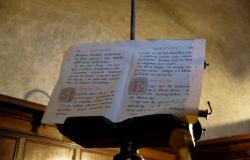Today is the last day to pay the first installment of the IMU, the single municipal tax: the advance, equal to half of the total amount, is worth 11 billion in revenue. According to an analysis by Uil, the tax this year will cost an average of 1,022 euros per owner (of which 511 for the down payment). Among the most expensive cities, Rome ranks first, with an average annual value of 2,135 euros, followed by Siena (1,937 euros) and Padua (1,770). Who has to pay? With the exclusion of the first home (unless it is considered luxury), the single municipal tax – introduced in 2012 to replace the ICI and merged with the Tasi by the 2020 budget law – must be paid by the owners of buildings, areas buildings and agricultural land (this is the general rule, because then there are exemptions and deductions).
Who has to pay the first IMU installment and how to make the payment
First of all, the IMU is not paid on the first house, the one which is the registered residence and habitual residence of the owner-taxpayer: to benefit from the exemption on the first house, therefore, it is necessary that it is actually the one in which the taxpayer resides and resides mainly during the tax period. The owner of the property has to pay, and therefore in the case of rent nothing will be owed by the tenant. In detail, around 25 million citizens have to make the payment, including:
- owners, holders of real rights of usufruct, use, habitation, emphyteusis, surface on the property;
- parents assigned to the family home following the judge’s order;
- concessionaires of state-owned areas or tenants of properties, including those to be built or under construction, granted under financial leasing.
The payment must be made in two annual installments, each worth 50% of the tax. The first expires on June 16th (June 17th this year) and the second on December 16th. However, nothing prevents you from making the payment in a single annual payment, by the deadline of the first instalment. The tax can be paid using the F24 form or, alternatively, with the slip made available by the Italian Post Office in post offices, with the foresight that in this case the payment must be made separately for each municipality in whose territory they are located. the properties. The IMU applies in almost all Italian municipalities. Only the tax autonomy of Friuli Venezia Giulia and the two autonomous provinces of Trento and Bolzano remain, in which Imis and Imi continue to apply respectively, also payable with the F24.
The rates are set at 0.5% for first luxury homes, 0.86% for other properties, including building land, 0.86% for properties for productive use (category D), 0.76% for agricultural land, 0.1% for rural buildings for instrumental use and 0.1% for non-rented goods buildings. All percentages on which individual municipalities can intervene, increasing or decreasing them, sometimes to the point of zeroing them.
The benefits provided include real estate units granted on free loan for use by the taxable person to relatives in a direct line within the first degree and the properties of Italian pensioners residing abroad and registered with the Aire (the registry of Italians residing abroad). ‘abroad). No tax even on illegally occupied properties. However, the IMU on unusable and uninhabitable buildings remains, although with a tax base reduced by half, and Confedilizia underlines that eliminating it “would cost just over 50 million euros”. In total since 2012, the year of the establishment of the IMU with the Monti maneuver, the tax revenue has reached almost 300 billion euros, calculates the owners’ association. On the tax exemption front, the payment exemption is extended by one year for the municipalities affected by the 2012 earthquakes in Emilia-Romagna, Lombardy and Veneto and 2016 in central Italy.
Confconstruction data
Between 2011 and 2022, properties reduced to ruins (collaborative) more than doubled, going from 278,121 to 610,085 (+119%). These are properties, 90% of which belong to natural persons, which reach conditions of dilapidation due to the simple passage of time or, even, as a result of concrete actions by the owners aimed at at least avoiding the payment of the IMU, states Confbuilding. “The IMU, like all property taxes, is a progressively expropriating tax on the assets it affects – declares the president of Confedilizia Giorgio Spaziani Testa -. The fact that these assets are real estate, i.e. the traditional form of investment of Italians , makes the impact of the tax particularly heavy, also on a social level. We ask the government to start a gradual reduction of this tax which is an enemy of savings and growth. We could start by eliminating it on rental homes with agreed rent contracts, to extend it the housing offer, and on properties in small towns, to facilitate the rebirth of villages and internal areas. Priorities must be chosen, but we need to start”.
Where the IMU costs more
Uil’s economic, fiscal and social security policy service analyzed the average costs for owners. The IMU for a second home, in a capital city, will cost around 1,022 euros this year, with peaks of over two thousand euros in large cities. For the main residence considered luxury you will pay on average 2,531 euros, while for the related appurtenances 99 euros. In the north west the average annual cost of the IMU is 1,027 euros and in the north east 1,060 euros. In central Italy it rises to 1,144 euros, while in the south and on the islands the average IMU costs are “significantly lower”, equal to 982 euros and 829 euros respectively.
Among the cities with the highest costs for second homes, as mentioned at the beginning, Rome ranks first with an average annual value of 2,135 euros. Followed by Siena, where the average annual cost is 1,937 euros, and Padua with 1,770 euros. In Livorno, the average cost for a second home is 1,549 euros, while Verona closes the list of the five most expensive cities with an average annual cost of 1,497 euros.
Catanzaro stands out for the lowest average cost of the IMU for second homes, equal to 509 euros per year. Messina follows with an average annual cost of 519 euros and Caltanissetta with 549 euros. In Crotone, the average cost for a second home is 556 euros, while Enna closes the list of the five least expensive cities, with an average annual cost of 575 euros.






